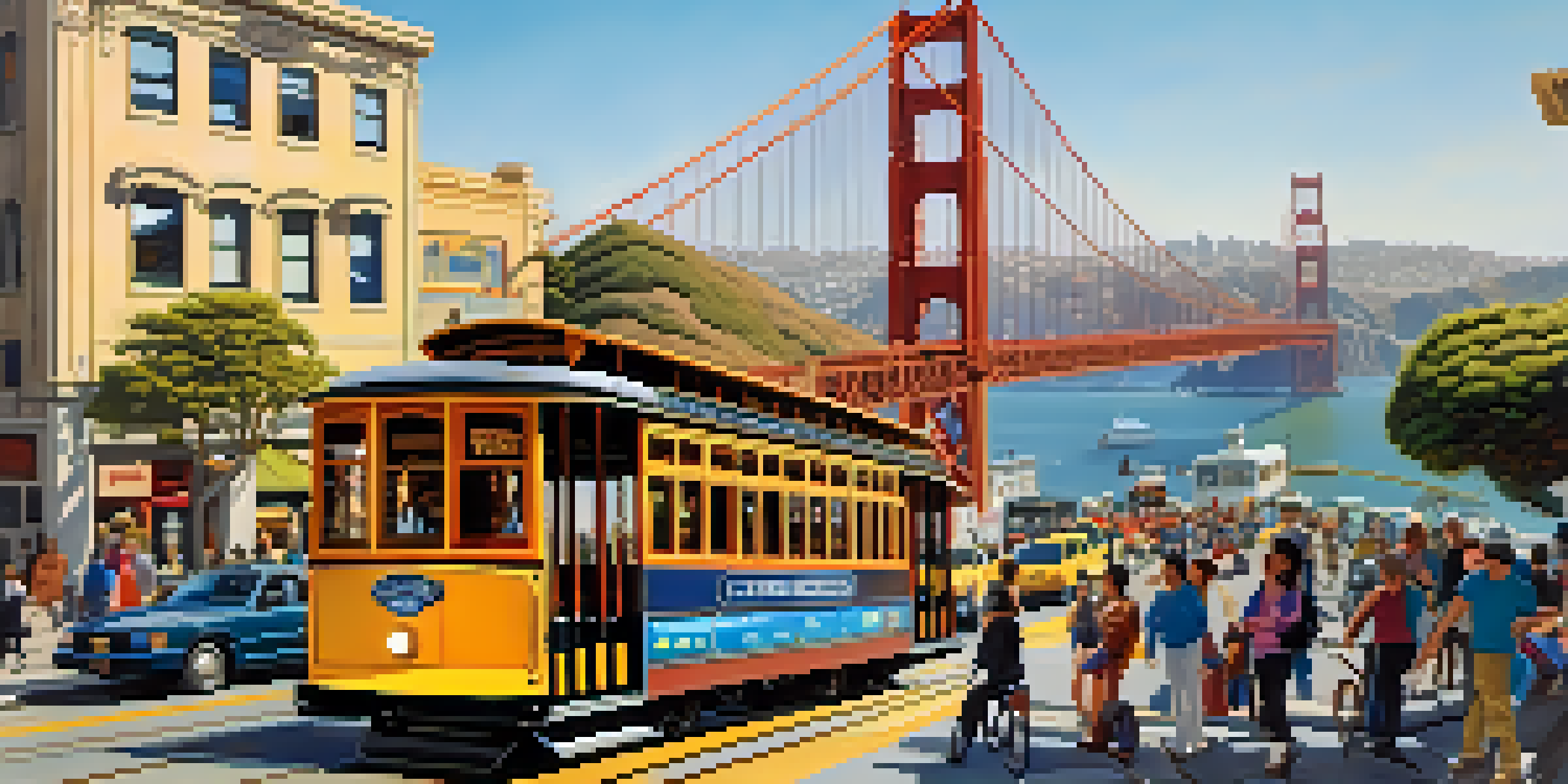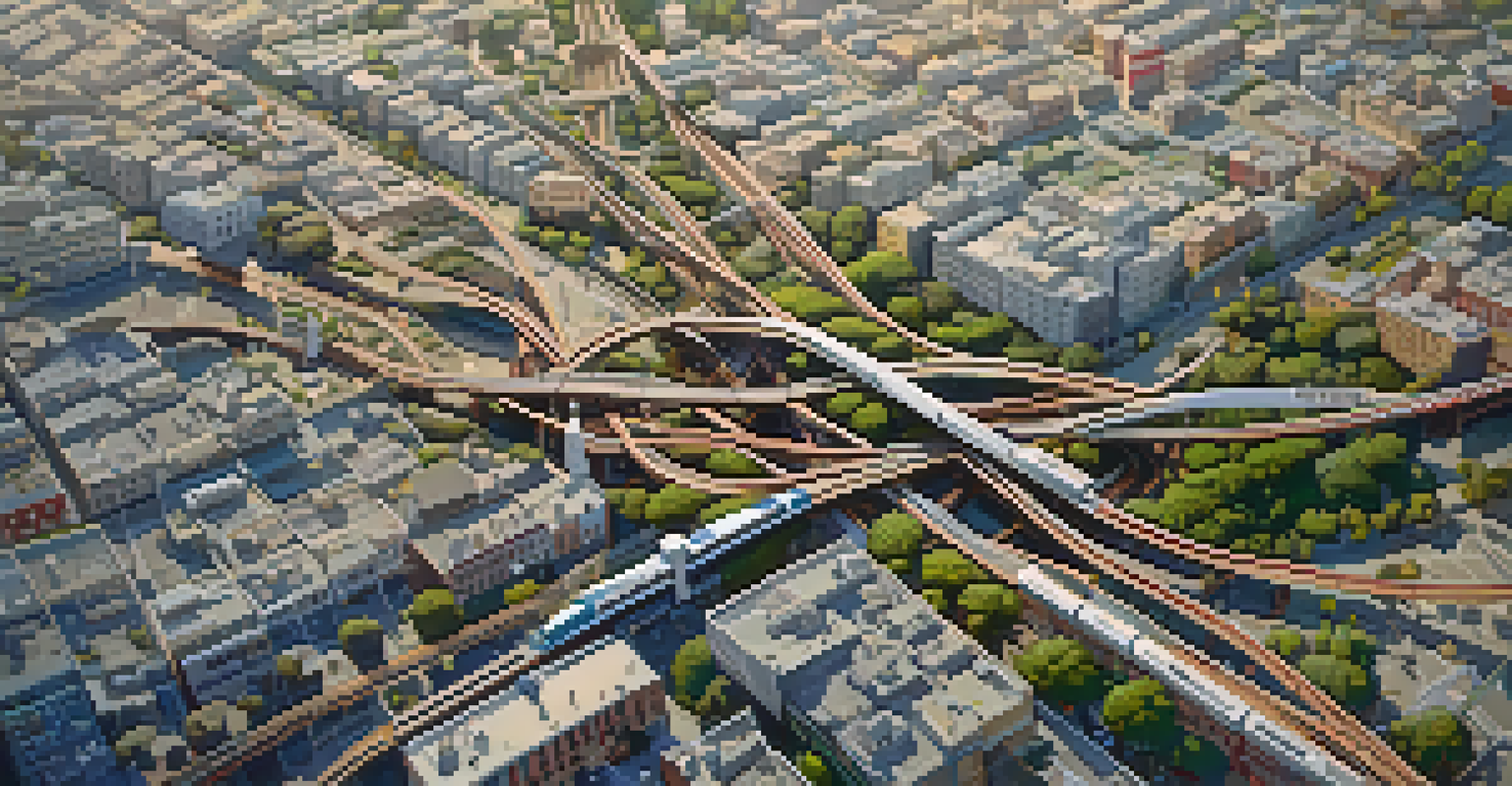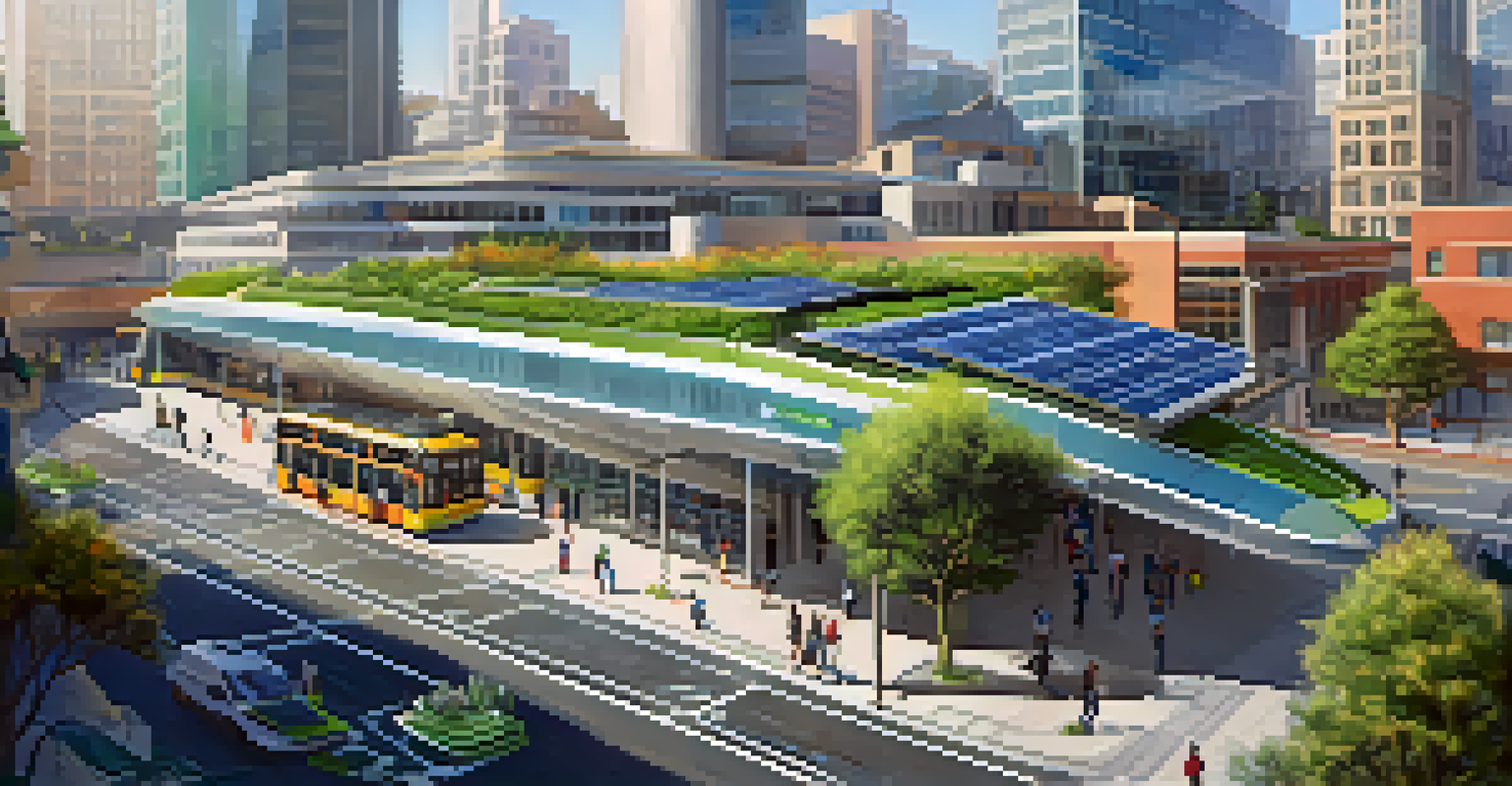Urban Planning and Its Influence on San Francisco Transit Systems

The Role of Urban Planning in Transit Development
Urban planning is like the blueprint for a city's growth, dictating how transit systems evolve over time. In San Francisco, strategic planning has facilitated the development of efficient transit networks that cater to the city's unique geography and population density. This means considering not just where people live and work, but also how they move around the city.
Good urban planning is the foundation of a balanced and functional community.
For instance, the integration of public transportation options like buses, trams, and the iconic cable cars is a direct result of thoughtful urban planning. By mapping out essential routes and connections, planners can ensure that residents have access to reliable and convenient travel options. Additionally, this planning helps to reduce traffic congestion, making the city more navigable for everyone.
Ultimately, effective urban planning creates a cohesive transit system that enhances the quality of life for San Francisco's residents. It allows for the seamless movement of people and goods, creating a more vibrant and economically viable city. As urban landscapes continue to evolve, the role of planning remains crucial in shaping efficient transit solutions.
Historical Context: Transit Evolution in San Francisco
To understand the current transit systems in San Francisco, we must look at their historical roots. The city's transit journey began in the mid-19th century with horse-drawn streetcars, evolving significantly over the decades. Each change in technology and urban policy has left an indelible mark on how transit operates today.

The introduction of electric streetcars in the early 1900s was a game changer, enabling faster and more efficient travel across the city. This development coincided with a population boom, pushing urban planners to rethink transportation strategies. As neighborhoods expanded, the need for a reliable transit system grew, prompting further innovations.
Urban Planning Shapes Transit Systems
Strategic urban planning in San Francisco has been essential in developing efficient and accessible transit networks.
Today, San Francisco's transit history informs modern decisions about infrastructure and accessibility. By studying past successes and failures, planners can create a framework that meets the needs of the present while anticipating future demands. This iterative process highlights the dynamic nature of urban planning and its lasting impact on transit systems.
Key Transit Systems Shaped by Urban Planning
San Francisco boasts several key transit systems that showcase the influence of urban planning. The Bay Area Rapid Transit (BART) system is one of the most significant, connecting the city to the greater Bay Area and facilitating easy commutes. Urban planners were instrumental in determining BART's routes, ensuring it serves high-density areas effectively.
Transit-oriented development is about creating vibrant communities where people can live, work, and play without relying on cars.
Similarly, the Muni system, which includes buses, light rail, and cable cars, is a product of thoughtful planning aimed at addressing the unique needs of San Francisco's residents. With its hilly terrain and diverse neighborhoods, Muni's route design reflects a deep understanding of the city's geography. Planners continuously assess and adjust routes to maximize efficiency and accessibility for all.
These transit systems not only reflect urban planning efforts but also contribute to a sustainable future. By prioritizing public transportation options, San Francisco aims to reduce reliance on cars, lower emissions, and promote a healthier lifestyle for its residents. This approach demonstrates how urban planning can directly influence environmental and social outcomes.
Challenges in Urban Planning and Transit Integration
While urban planning has significantly influenced San Francisco's transit systems, it hasn't been without challenges. One major issue is balancing the needs of a growing population with limited space. As more people flock to the city, urban planners must find innovative solutions to accommodate increased demand for public transportation.
Moreover, geographical constraints pose a unique challenge. San Francisco's iconic hills and waterfront limit where new transit routes can be developed. Planners often face tough decisions about where to invest resources, weighing the benefits of expanding existing systems against the costs of new developments.
Technology Enhances Transit Efficiency
The integration of technology, such as real-time tracking, is revolutionizing the user experience and optimizing transit systems.
These challenges highlight the importance of community input in the planning process. Engaging residents in discussions about transit needs helps create solutions that are both practical and equitable. By fostering collaboration, urban planners can navigate challenges more effectively, ensuring that transit systems evolve alongside the city.
The Role of Technology in Modern Transit Planning
Technology is revolutionizing urban planning and transit systems in San Francisco. With the rise of data analytics and smart technologies, planners can gather and analyze information about transit usage patterns, identifying areas for improvement. This real-time data allows for more informed decision-making when it comes to optimizing routes and schedules.
For instance, real-time tracking apps enable riders to check bus and train arrival times, enhancing their overall experience. This integration of technology not only makes public transit more user-friendly but also encourages more people to choose these options over driving. By leveraging technology, urban planners can create a more efficient and attractive transit system.
Additionally, advancements in green technology are shaping the future of transit. Electric buses and sustainable infrastructure projects are increasingly prioritized to reduce the city's carbon footprint. As urban planners embrace these innovations, the potential for a more sustainable and efficient transit system in San Francisco becomes an exciting reality.
Sustainable Urban Planning Practices in Transit
Sustainability is at the forefront of urban planning discussions, particularly in transit systems. In San Francisco, planners are increasingly focusing on integrating eco-friendly practices into their strategies. This includes prioritizing public transit options that minimize environmental impact, such as electric buses and improved bike lanes.
By encouraging residents to utilize public transportation, urban planners aim to reduce traffic congestion and lower greenhouse gas emissions. This shift toward sustainability not only benefits the environment but also enhances the overall quality of life in the city. A well-planned transit system can promote healthier lifestyles and create more livable urban spaces.
Sustainability is Key for Future Transit
Emphasizing eco-friendly practices in urban planning is crucial for reducing environmental impact and improving city livability.
Moreover, sustainable practices in urban planning extend beyond transportation. The incorporation of green spaces and pedestrian-friendly designs fosters a sense of community and connection among residents. By considering the holistic impact of transit systems, urban planners can create a more sustainable future for San Francisco.
The Future of Urban Planning and Transit in San Francisco
As San Francisco continues to grow and evolve, urban planning will play a pivotal role in shaping the future of its transit systems. Emerging trends, such as remote work and electric vehicles, are prompting planners to rethink traditional approaches. Adapting to these changes will be essential for creating a resilient and responsive transit network.
In addition, the ongoing focus on equity will drive future planning efforts. Ensuring that underserved communities have access to reliable transit options is crucial for fostering inclusivity. Urban planners will need to prioritize outreach and engagement to understand the specific needs of diverse populations within the city.

Ultimately, the future of urban planning and transit in San Francisco is about fostering a collaborative vision. By embracing innovation, sustainability, and community input, planners can create a transit system that meets the needs of all residents. This ongoing evolution will ensure that San Francisco remains a vibrant and accessible city for generations to come.